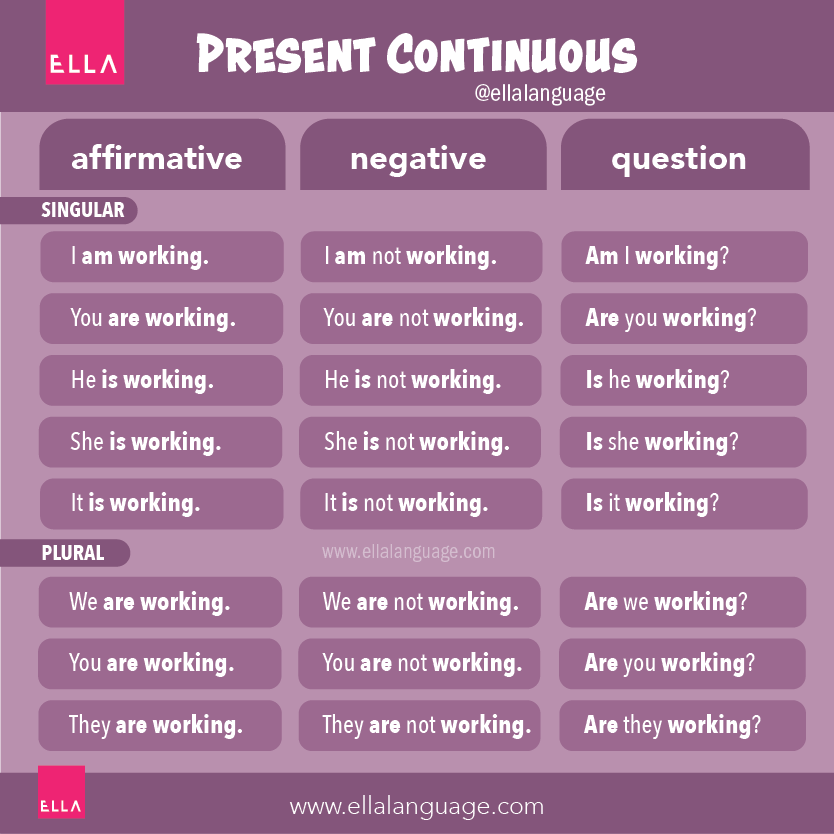Present Continuous
The Present Continuous (also called the Present Progressive) is usually the second tense that we learn when learning English. We use the Present Continuous to talk about ongoing events (happening at the time of speaking) or about events in the near future. In this tense, we use the present participle with the verb “to be”.

Affirmative sentences in Present Continuous
In the Present Continuous, we form sentences by using the verb to be and the present participle form of the main verb (verb-ing).
Subject + to be + verb-ing + the rest of the sentence
It’s important to remember that the verb to be has to be appropriately conjugated according to the subject of the sentence.
He is working right now.
Negative sentences in Present Continuous
We form negative sentences by adding not between to be and the main verb.
Subject + to be + not + verb-ing + the rest of the sentence
Questions in Present Continuous
We form questions by the inversion of to be.
To be + subject + verb-ing + the rest of the sentence
The Usage of Present Continuous
We use Present Continuous to talk about:
Anna is cleaning her room now.
We are meeting at 5 p.m.
He’s always burning the toasts.
I’m studying to be an engineer.
She’s working in a restaurant until summer.
His stamp collection is getting bigger.
Non-continuous verbs
Non-continuous verbs are verbs that are rarely used in continuous tenses. These verbs include abstract verbs (e.g. want, need, cost), possession verbs (e.g. belong, own), emotion verbs (e.g. like, love, hate, dislike, envy). With these verbs, we usually use the Present Simple.




